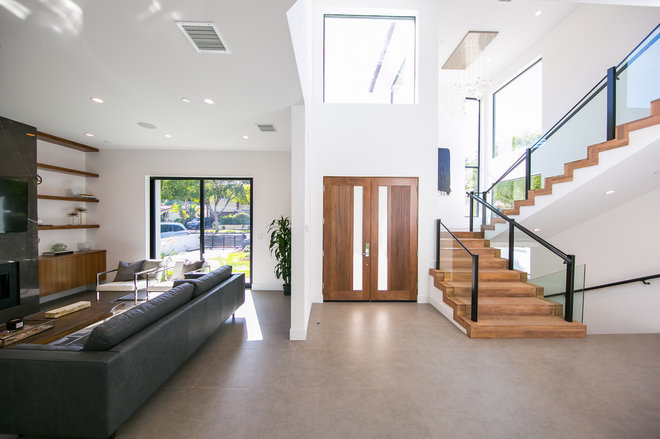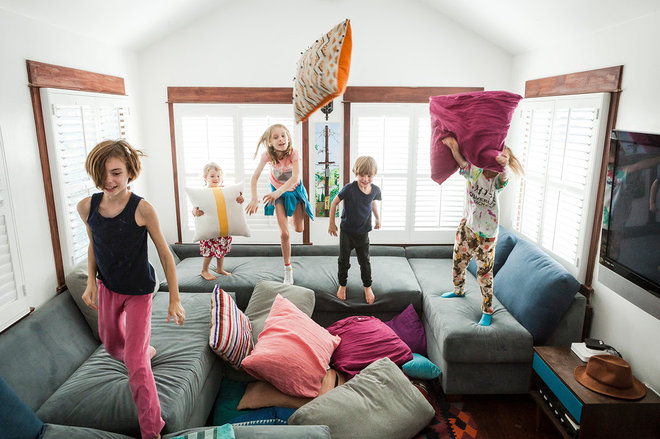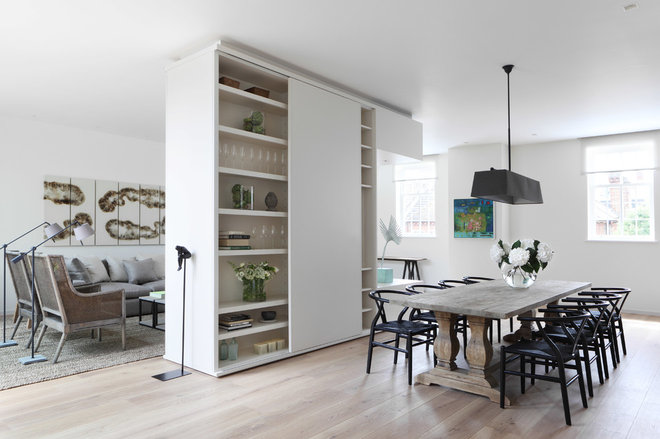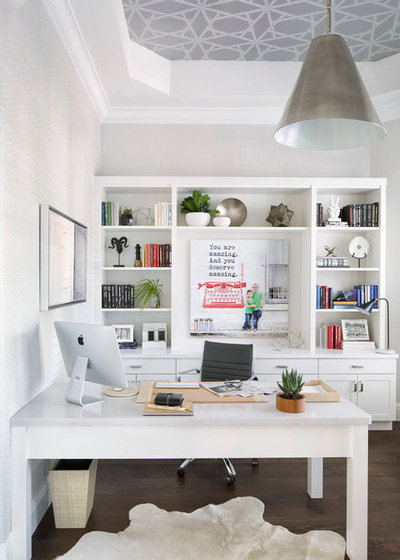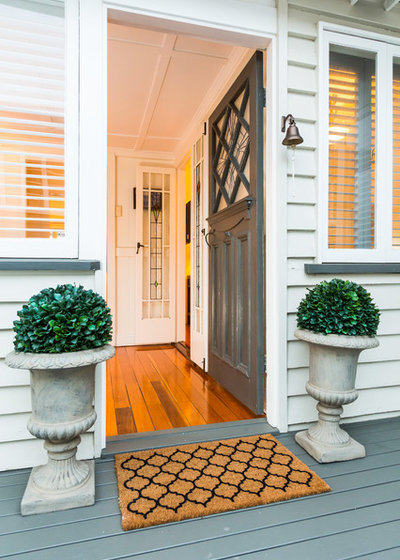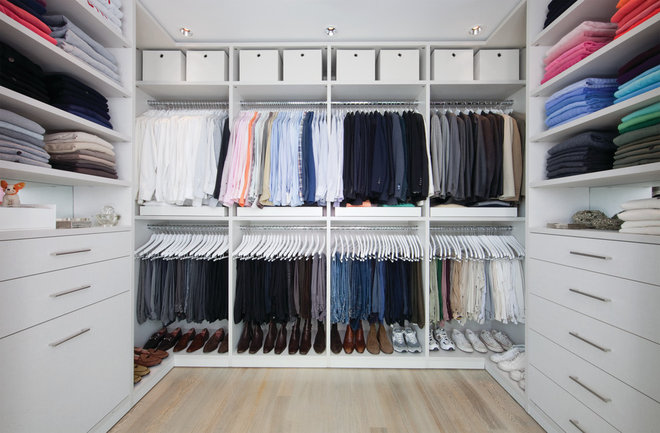Professional Organizing Tips for 6 Situations You May Face
Whether you’re remodeling, shifting into a new life stage or working from home more, this pro advice can help
The start of a new year often brings the urge to declutter and organize, but as January turns to February, that urge may begin to wane. Fortunately, there are other ways to motivate yourself to tackle the decluttering and organizing challenge. One is to consider life transitions — the changes in your life that naturally offer an opportunity to take a fresh look at your possessions and how you store them.
Whether you’re remodeling, building a new house, becoming an empty nester or working from home more these days, you could have good reason to declutter and organize. Read on for my organizing tips for six common life changes you may face.
1. You’re Remodeling Your Home or Building a New Home
Remodeling or constructing a new home is a great opportunity to create proper storage as well as efficient flow, so it’s good to take organizing into account as you plan your project.
- Design the flow of your home to work for your lifestyle by considering your daily routines. For instance, consider where you will enter the home, drop off mail and have your children do their homework.
- Plan storage to accommodate everyone in the household. Will your family size grow — perhaps with a new baby or an aging parent — or shrink — perhaps with a child going off to college — in the near future?
- It’s best to declutter before planning your remodel. That way, you can plan to store what you want to keep rather than what you have now.
- Measure your possessions before finalizing storage solutions. For example, if you don’t want your toiletry items on the counter, be sure to select drawers or cabinets with sufficient depth and height to house them. Similarly, if you don’t want all your pots and pans on the stovetop when not in use, be sure your new kitchen cabinets can store them all.
- If your remodel or building project requires you to move out temporarily, take the items you need for everyday living and pack away those you won’t need for a while.
2. Your Life Stage Is Changing
Home organization is fluid. Changes such as marriage, growing children, retirement, divorce, downsizing, work demands and health requirements may alter how you can use your spaces.
- Be open-minded. Ignore room labels such as “family room” or “second bedroom” and think about what your ideal use would be for that space. Perhaps a dining area would now work better where the family room has been. Maybe your second bedroom would actually serve as the perfect walk-in closet.
- Embrace your new life stage by reviewing whether your current belongings are still relevant. If you’ve retired and your downsized home can no longer entertain a large number of guests, you may want to pare down some of your serving pieces and dinnerware. If you’ve been injured and can no longer ski, passing along your skiing equipment may be the emotional release you need to allow a new activity into your life.
3. Your Space Doesn’t Work Efficiently for You My ultimate goal is for my clients to love spending time in their spaces, surrounded by items they enjoy, with systems in place for efficiency. Home organization should allow them to manage their daily routines with ease and should support their activities (such as entertaining, crafting or baking).
In addition to making sure each room is used for the most pragmatic purpose, I recommend that clients incorporate ergonomics principles into their rooms. Your most used items should be within easy reach to maximize safety and efficiency.
4. You’re Working From Home More
It’s not uncommon for jobs to require some kind of working at home. I’ve found that people often use existing furniture to create a home office, and there’s nothing wrong with this as long as it supports a safe and productive work environment — especially if you work from home for more than a few hours per week. However, I have seen too many dining room setups with files and supplies located inconveniently throughout the home, not to mention inadequate seating.
- Set up your physical workspace with ergonomics in mind, being mindful of table, seating and keyboard heights and the reach distance for frequently used supplies like your mouse or a reference binder.
- Set up a mail-sorting system that works for you to keep papers from piling up.
- Free up space by switching from paper bills and statements to online ones.
5. You’re Selling Your Home
Packing a home for a move can be overwhelming, especially if the move includes selling your home.
- Invest time upfront to declutter and pare down unused and unwanted items before packing. You’ll save time on the unpacking end and save money on having the remaining items packed and moved. Plus, you’ll face less unwanted clutter in your new home.
- If you’ll be staging your home yourself, keep the style neutral and remove as many personal touches as possible so potential buyers can visualize themselves in your home.
- If you can’t yet move into your new home when you sell your current one, you may need to pack for a temporary stay. Packing minimally is generally a good idea, but if your temporary stay will be significant, you may want to include some items to maintain a sense of normalcy — for example, a few holiday decorations if you’ll be in temporary quarters over the holidays. This is especially true if you have kids.
- Labeling your moving boxes by the room they should be placed in can help reduce chaos and confusion. I recommend also numbering your boxes and creating a spreadsheet outlining which categories of items are in them, which can be useful when you can’t remember what you packed where.
6. You’re Overwhelmed by Your ThingsTackling an organizing project can be daunting. Making decisions about your belongings, especially if they’re sentimental, is often mentally exhausting. In fact, a sense of being overwhelmed may be the most common experience we face when thinking about decluttering. And frankly, it can apply to and overlay any of the specific life situations outlined above.
If you’re decluttering on your own, I recommend you follow a few simple rules to maximize your precious time and safeguard your mental energy.
- Break down your possessions into categories that are as small as possible — for example, T-shirts instead of all tops, or magazines instead of all reading material. That way, only a small part of your home is in disarray at a time.
- Schedule time to focus on decluttering. I suggest starting with four-hour chunks — enough time to get on a roll but not so long that it leaves you mentally and physically exhausted the next day.
- Remove distractions. If you can, arrange for baby sitters or pet sitters and commit yourself to not engaging in nonemergency phone calls and texts.
Even if you’re inherently organized, your available time may not be sufficient for you to assess your current systems and change them to better suit your needs. For instance, if you previously entered your home through the garage but now use the front door, it might make sense to relocate some items to an entryway cabinet. Perhaps you no longer entertain often and can now consider moving some of your dinnerware out of a prime kitchen cabinet.
While these situations may sound straightforward, making decisions, planning your space and physically relocating items does take time and mental energy. If you’re lacking either, it may be time to call in a professional organizer to objectively evaluate, plan and customize your space.

